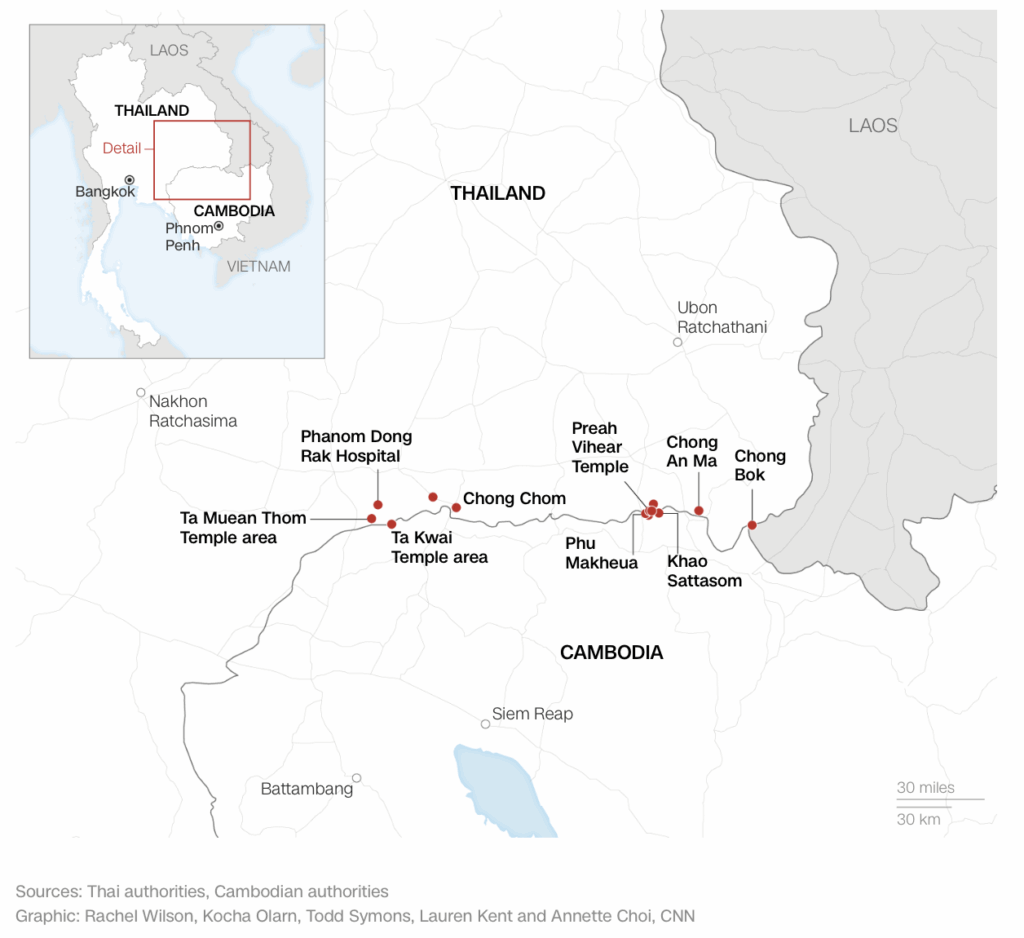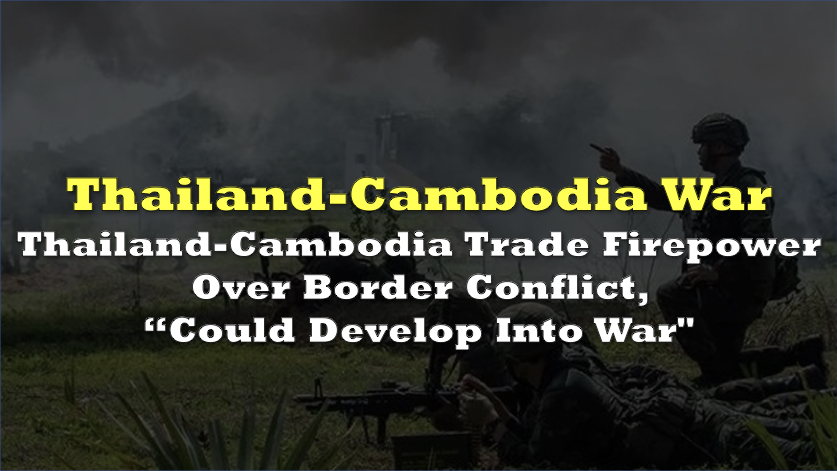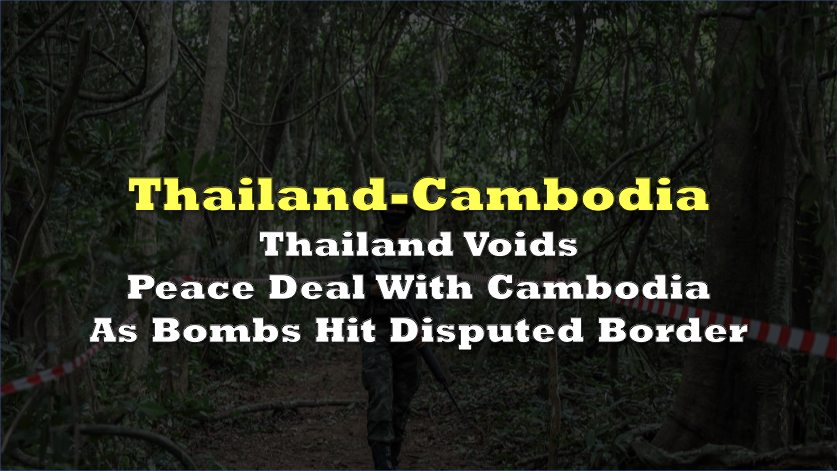Clashes that erupted along the 800-kilometre Thai-Cambodian border at Thursday dawn have already become the deadliest fighting between the neighbours in more than a decade. By the evening of next day, the conflict reported around 15 fatalities and hundreds of thousands of people displaced.
Thai officials warn the confrontation “could develop into war.”
The frontier in dispute was drawn in 1907 by France, then Cambodia’s colonial ruler. Bangkok never fully accepted the French map, especially around the Khmeric hill-temple of Preah Vihear and its satellite shrines Ta Moan Thom and Ta Krabey. The International Court of Justice awarded Preah Vihear to Cambodia in 1962 and clarified surrounding land in 2013, but sovereignty over adjacent ridges remains unsettled. Similar map ambiguities fuelled armed exchanges in 2008-11 and continue to underlie today’s crisis.
Casus belli
This round began on May 1 when a Cambodian soldier died in a brief shootout in the Emerald Triangle. Friction intensified after two Thai de-mining patrols—on July 17 and 21—lost six soldiers to newly laid explosives.
Bangkok blamed Phnom Penh, withdrew its ambassador on July 23 and expelled Cambodia’s envoy the same afternoon. Phnom Penh denied planting mines and asked the UN Security Council to intervene, while acting Thai Prime Minister Phumtham Wechayachai warned that the confrontation “could develop into war.”
This comes following a leaked phone call in June between Thai premier Paetongtarn Shinawatra and Cambodia’s former strongman Hun Sen—criticising Thai commanders—which reportedly forced Paetongtarn into suspension and fed nationalist outrage on both sides.

Proxy war?
According to the Military Balance 2025, Thailand fields about 361,000 active-duty personnel—more than triple Cambodia’s 124,000—and outspends its neighbour US$5.7 billion to US$1.3 billion a year.
Thailand fields modern Swedish Gripen and American F-16 fighters, Israeli-derived M758 155 mm self-propelled howitzers, VT-4 main-battle tanks from China and the region’s deepest inventory of artillery. On the other hand, Cambodia’s 124,000-strong force relies on Cold-War-era T-54/55 and Type-59 tanks, Chinese BM-21, RM-70 and PHL-90 rocket batteries and has no combat-ready air wing, though its infantry has fresh experience from annual Golden Dragon drills with the People’s Liberation Army and access to China’s newly expanded Ream naval base.
The US, Thailand’s treaty ally since 1954, urged an “immediate cessation of hostilities” and hinted at possible logistical support for evacuations. China expressed “deep concern” but praised its “iron-clad friendship” with Cambodia, calling for talks.
ASEAN chair and Malaysian Prime Minister Anwar Ibrahim offered mediation and said both capitals gave “positive signals,” yet Thai foreign ministry spokesman Nikorndej Balankura rejected third-party involvement, insisting Cambodia must first halt its offensive.
The European Union, Australia, and France echoed ceasefire appeals, and the UN Security Council placed the crisis on its Friday agenda after Cambodia’s letter alleging Thai aggression.
The Lowy Institute’s Asia Power Index ranks Thailand tenth—“middle power”—while Cambodia sits nineteenth among 27 surveyed states.
Battles between T-55 and Type-59 Tanks with the Royal Cambodian Army and T-84 and M60 Tanks of the Royal Thai Army are reported to be taking place on the border between the two countries near Ta Thav.
— OSINTdefender (@sentdefender) July 24, 2025
Second day
Firing began at around 4:30 in the morning on Thursday when Cambodian multiple rocket launchers struck Thai positions near Ta Moan Thom; Thai artillery replied within minutes and, before mid-morning, Royal Thai Air Force F-16s were bombing Cambodian gun lines—their first combat sortie since the 1980s.
Video circulated showed tanks of the Royal Cambodian Army trading shots with Thai T-84s and M60s near Ta Thav, while Thai FV101 Scorpions, Stryker APCs, and M113s rolled toward the ridge.
Overnight, Cambodian BM-21 and PHL-90 salvos lit the sky above Surin and Ubon Ratchathani provinces while Thai drones dropped munitions on rocket crews, and hospitals in Kantharalak and Surin reported shell impacts.
By dawn next day, clashes raged in twelve sectors spread across 210 kilometres of frontier.
Thailand’s interior ministry says 138,000 people from four provinces have been moved to schools, temples and, university gyms. Health officials confirm fifteen dead—including an eight-year-old boy—and forty-six wounded, thirty-one of them civilians. In Cambodia’s Oddar Meanchey province, local authorities report one civilian killed, five hurt, and roughly 4,000 evacuees.
2025 Cambodian–Thai Border Clash (Thread)
— Lee Ann Quann (@AnnQuann) July 24, 2025
Well, it's a stone's throw away from Vietnam so it naturally draws the attention of many Vietnamese including me. Let's get to it.
(Will be updated as new stuff surface) pic.twitter.com/f3akdBaA6c
War online
Both armies have waged a parallel information campaign. Thai crews stencilled “A souvenir from Nong Khai” on 105 mm and 155 mm shells, and pilots revealed handwritten taunts on F-16 bombs before take-off. Cambodian soldiers posted helmet-cam footage of Type 81 light-machine-gun bursts and RPG-69 launches into Thai territory.
Analysts tracked tracer fire filmed from the Cambodian side and confirmed Thai use of Israeli-pattern atmosphere-measuring drones. Each military accuses the other of firing first and of deliberately targeting civilians: Phnom Penh claims cluster munitions were used at two sites, an allegation Bangkok has neither confirmed nor denied.
Bangkok cites Article 51 of the UN Charter, arguing that rockets striking civilian areas grant it the right of self defence. It also frames the mine incidents as violations of the 1999 Ottawa Convention, which Cambodia has signed.
Phnom Penh counters that Thai artillery has crossed into land confirmed Cambodian by ICJ rulings and calls Thailand’s air strikes “reckless and brutal.”
Thai officials label the shelling of Surin Hospital a war crime, while Cambodian diplomats say use of cluster munitions breaches customary humanitarian law even though Thailand is not party to the 2008 Convention.
Information for this story was found via CNN, The Guardian, BBC, Reuters, and sources mentioned. The author has no securities or affiliations related to the organizations discussed. Not a recommendation to buy or sell. Always do additional research and consult a professional before purchasing a security. The author holds no licenses.





